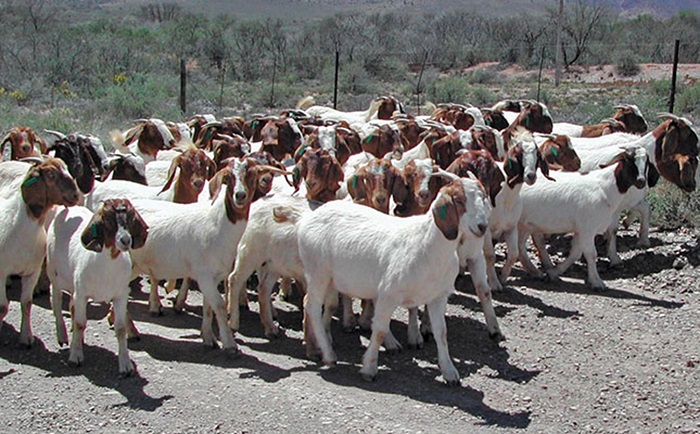An increasing number of farmers are keeping goats for commercial purposes in Zimbabwe. Goat farming business is a very profitable business to operate in Zimbabwe. The demand for goat meat is increasing. People want to try a different type of meat which is not chicken, beef or pork. Goats are easy to keep and are very profitable as the feed costs are low due to the fact that they eat a variety of foods. An increasing number of farmers in Zimbabwe are keeping goats due to the high profits from the goat farming business. Demand for goat meat is high and there is a lot of potential for the growth of the market.
So much so that Mnangagwa, while commissioning the Bindura University of Science Education (BUSE) Goat Genetics and Artificial Insemination Centre, said that “Goat breeding projects and attendant value addition interventions will go a long way towards ensuring broad-based empowerment, wealth creation and lifting millions out of poverty within our society.” He further suggested that these project must be deployed towards the realisation of robust and vibrant rural industry systems supported by livestock production and related development of modern animal handling facilities.
The Goat Genetics and Artificial Insemination Centre is a welcome development that serves to get a grip on genetics as a key ingredient in sustainable and successful goat farming.
Zimbabwean breeds have not been subjected to adequate scientific scrutiny. However, a lot of work still has to be done to unlock the potential and promise of goat farming that can uplift millions of our people from poverty. Furthermore, and with a national goat herd of approximately four million, Zimbabwe is barely on the map of goat-producing countries.
The goat herders are favored by the existence of abundant land and suitable climatic conditions that can be leveraged to boost their national herd to 25m by year 2025, should the current situation turn for the better.
According to media reports, most farmers have a long-enduring love and hate relationship with goats. They are seen as troublesome animals that are guaranteed to bring problems including invading into neighbours’ fields. Very little attention is given to goats which explains the 65% pre-weaning mortality rate. Goats also tend to live in unbearable conditions that compromise their health with pneumonia being a leading killer.
In addition, the market also poses a challenge as middlemen and the farmers only regard goats as an object for transaction. Farmers seem to only care for their goats when they exchange them for money. No one is concerned about fixing the gaps in the supply chain that will enable bringing goats to the market in a fairer and transparent manner.
At the same time, none of these players have ventured further to unlock the full value and multiple functions of a goat.
Breeding
There is also currently an ongoing frenzy about mixing local goat breed with foreign breeds such as Boer, Red Kalahari, and Savannah, among others. While there is no fundamental problem with cross breeding, the matter is presented like a quick fix. However, it does not address the core of why the local Mashona and Matabele breeds have progressively grown smaller due to inbreeding. Despite their high profligacy and adaptability, high reproductive wastage under traditional systems of management remains a limitation to increased local goat productivity. This loss in production has been attributed to a number of constraints namely poor nutrition, poor health care and low management input.
Without taking care of the basics, farmers can import all loads of exotic breeds to no avail. There is also a danger that we will end up wiping out our hardier, tastier and adaptable local breeds at the altar of increasing carcass weight through cross breeding.









